CONTACT US
Zhejiang waxing electromechanical co.LTD.,Factory located in Shandong,Headquarters located in Zhejiang,China.
Rolling bearings often encounter "fever" in production. If the cause is not clearly analyzed, not dealt with in time, and the measures are not appropriate, it will often get twice the result with half the effort, and even cause serious accidents such as bearing burnout and reducer gearing. Combined with several typical cases encountered by the author in the process of production and debugging, the following analyzes and summarizes the specific problems in the design, installation, lubrication, assembly and other links for your reference.
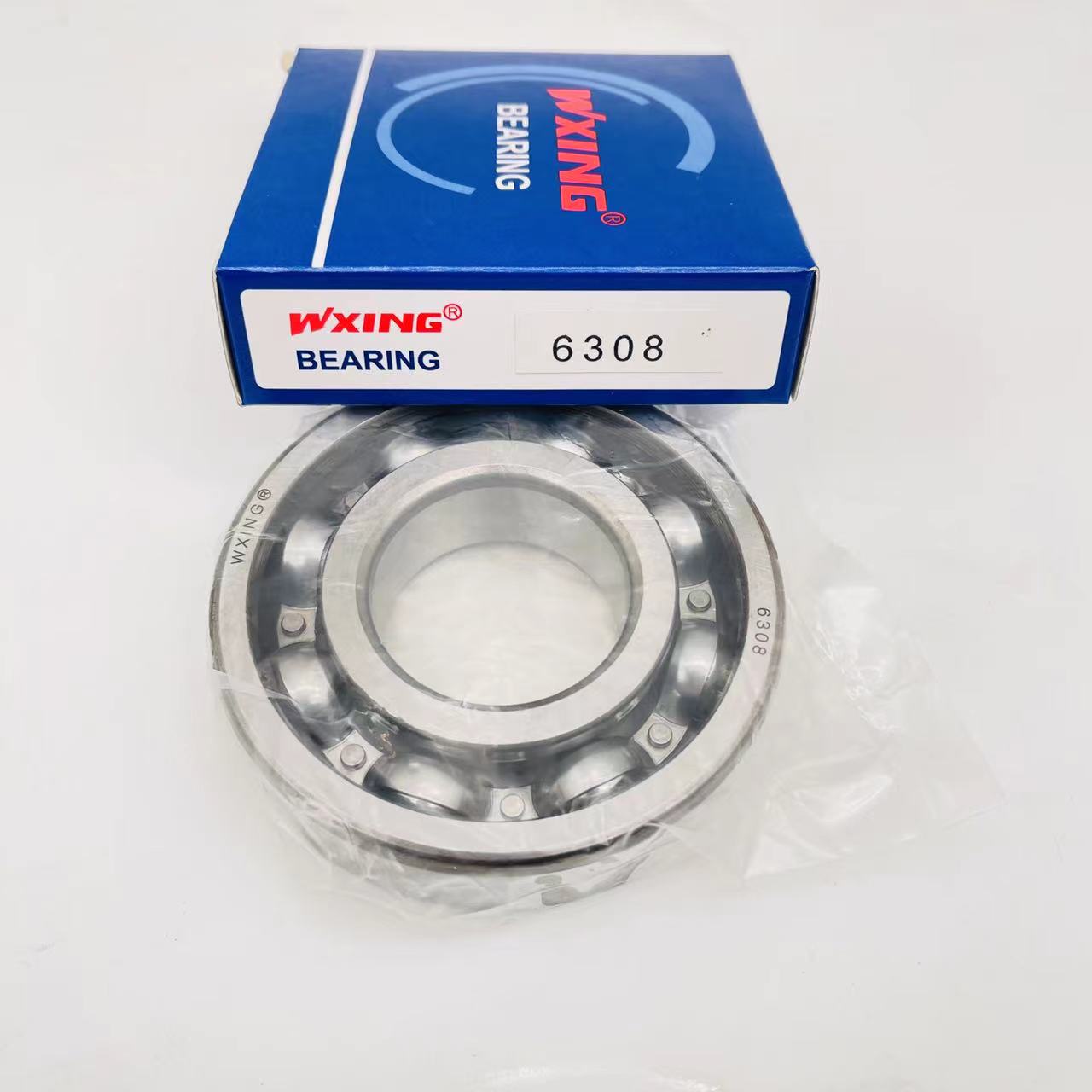 1. Bearing fever due to improper lubrication
1. Bearing fever due to improper lubrication
1.1 There are inherent deficiencies in the design of bearing lubrication parts
In 2003 (the initial stage of production), ZB Company’s No. 1 kiln head excess fan had several bearing burnout accidents. After on-site investigation, it was found that there was a problem with the oil mark design of the bearing seat. When the oil level is on the lower line of the oil mark, the actual measurement shows that the lowest row of balls of the bearing just touches the oil level. Only when the oil level is displayed on the upper line can the operation requirements be met. When the oil level is close to the lower mark line, the lubrication condition deteriorates. At first, the temperature of the bearing rises slowly. The on-site personnel did not pay enough attention to the alarm of the bearing fever. Once the temperature rise reaches a certain level, it will rise sharply in a very short period of time. Burnt out bearings. Therefore, if the oil mark is incorrectly marked, it will mislead the inspection and maintenance personnel. After finding out the reason, the refueling standard line was redrawn.
Another example is the high-speed shaft bearing of the rotary kiln reducer of CL Company. The bearing suddenly smoked only 2 to 3 hours after starting up. Afterwards analysis of the cause of the accident was that the oil return hole in the high-speed shaft bearing seat was too low, and most of the oil coming from the oil pipe directly flowed into the reduction box from the oil return hole. The angle of the oil return hole is adjusted to keep a certain amount of oil in the bearing seat
After that, it works fine.
1.2 The lubricating oil pipe is blocked by foreign matter
Due to the lack of strict lubrication management, dirty containers during refueling and oil change, or improper pickling of pipeline welding, causing welding slag, rust and other debris to enter the oil pipe, and then block the oil hole, it is more common in the preliminary engineering.
For example, ZB company's raw material mill reducer burns the bearing because the oil passage is blocked, and TH company's cement mill reducer also has the long-term high temperature of the bearing due to the oil passage being blocked by cotton yarn. In particular, when checking the oil quantity of the high-speed shaft bearing of the reducer of TH company, it is still unclear how much oil can be added to the high-speed bearing. cotton rope! In addition, in the process of replacing the bearing of the reducer, TH company also found that the oil inlet hole of the eccentric sleeve of the bearing is too thin (the oil hole of the eccentric sleeve can be one specification larger than the oil hole diameter of the bearing itself), so the oil hole was reamed deal with.
Since the bearings of various parts of the hard-toothed reducer are generally lubricated by thin oil stations, and the oil pipes at each lubrication point are connected in parallel, it is difficult to find the blockage of individual oil pipes when observing the total oil supply and oil return. Professional maintenance personnel will carefully check the temperature of each oil pipe, and judge whether the oil passage is smooth according to the temperature difference of the oil pipe. Generally, the temperature of the oil pipe is lower than that of other pipes.
The inspectors of PY Company once found that the temperature of the oil pipe of the high-speed shaft of the reducer in the kiln was low, and finally confirmed the serious hidden danger of oil pipe blockage, thus avoiding a major accident.
1.3 The lubricating oil (grease) has deteriorated or the refueling is not timely
The lubricating oil (or lubricating grease) used in rolling bearings has a certain working temperature. When the temperature is too high and water and ash enter the bearing seat, it will undergo serious oxidation, emulsification and other deterioration, thus losing its lubricating effect and causing the bearing to suffer from high temperature. And burn out. In addition, the quality of the lubricating oil (or grease) itself is poor or the oil (grease) is not timely during operation. Material powder will cause the temperature of the bearing to rise or produce abnormal noise.
1.4 The cooler of the lubricating pipeline is fouled and blocked, resulting in poor cooling effect
Especially in summer production, this problem is especially common. Some manufacturers do not hesitate to increase or connect coolers in series to enhance the cooling effect. Because of the serious fouling of the high-temperature fan cooler, frequent alarms for high bearing temperature have been encountered in various branches. A more effective solution is to pickle and descale the cooler every year before summer.
2. Bearing heating due to improper installation
2.1 Bearing fever caused by insufficient design expansion
This situation is more likely to occur on long-axis equipment such as large fans and crushers, and this is also a link that is easily overlooked by equipment design, manufacture, installation and maintenance personnel. A typical case of the rotary kiln rear exhaust fan of CX Company, the bearing at the free end of the fan experienced severe heating in the early stage of production, because the rotor main shaft thermally expanded and rubbed violently with the bearing end cover under working conditions, and the high temperature generated in a short period of time was reduced. Fusion weld the housing end cover to the end face of the rotor shaft. Therefore, when installing and accepting fresh air fans, attention should be paid to calculating whether the axial clearance of the bearing at the free end can meet the expansion requirements of the working conditions.
The way to calculate the expansion of the axis class is simple:
△L=L×(t-t0)×0.000012
In the formula: △L—expansion of the axis; mm;
L—shaft length between bearing seats; mm;
t—working temperature; °C;
t0—ambient temperature when the equipment is installed; °C.
It should be noted that the shrinkage of the equipment in winter should also be considered when installing in summer, especially for northern regions. Generally speaking, the ambient temperature difference between winter and summer in cold northern regions can reach up to 80°C. If a shaft with a length of 3m is installed in summer, the maximum shrinkage in winter (during shutdown) can be close to 3mm.
2.2 Bearing fever caused by installation skew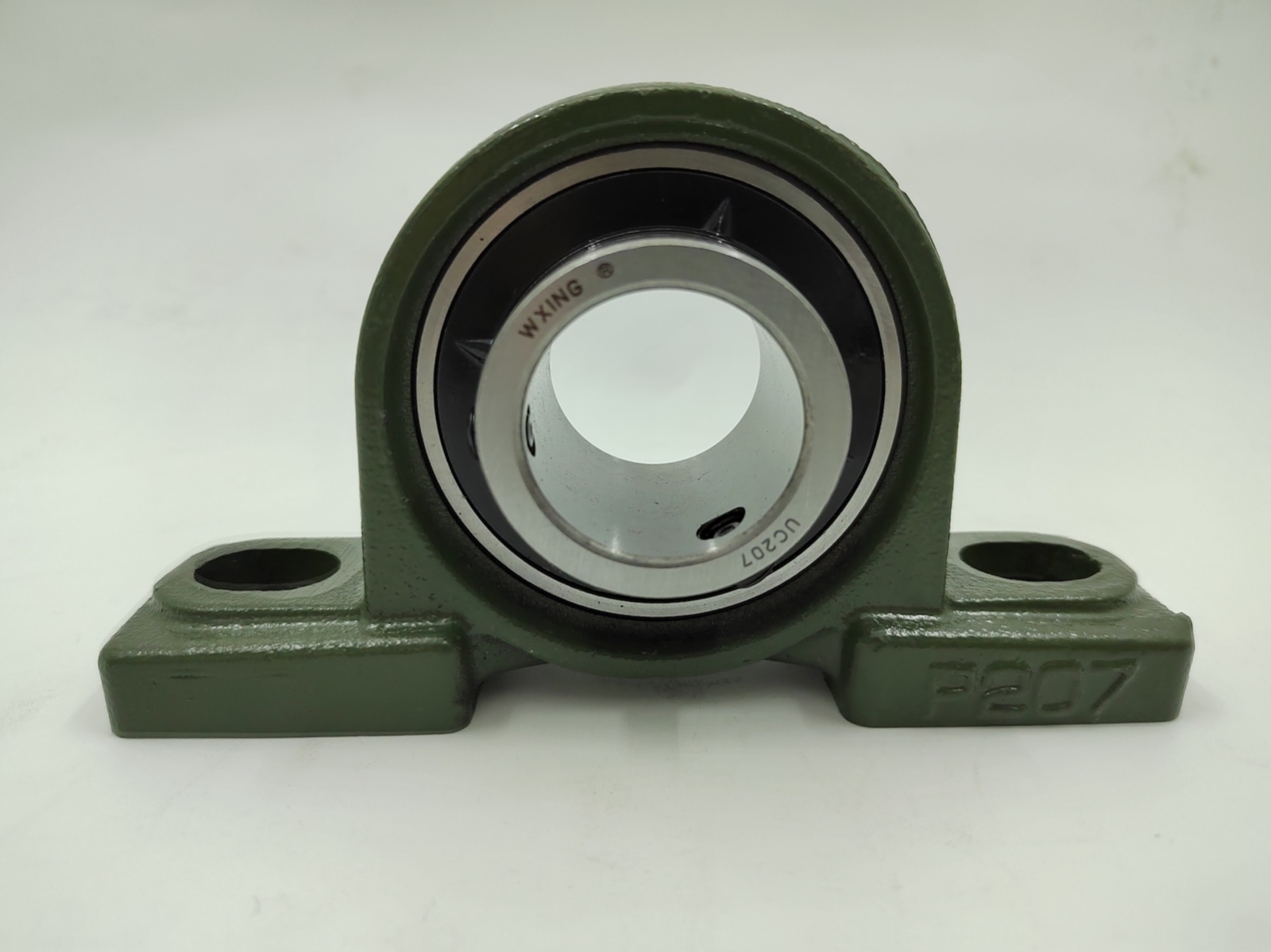
If the bearing is installed skewed, the ball will not roll in the correct position of the bearing raceway, and even cause a large axial force between the end face of the ball and the inner race and outer race of the bearing seat, resulting in overheating of the bearing. It takes a lot of effort to check the bearing irregularity. LY company's limestone crusher bearing heat is the case. The solution is to suck the dial indicator on the shaft, hit the pointer on the end face of the outer ring of the bearing, and check the runout of the end face for a week. The runout value of the end face is controlled within 0.05. You can also use a feeler gauge to directly check the clearance on the left and right sides of the bearing.
2.3 Fever caused by improper assembly of the bearing itself
(1) Improper coordination
The cooperation between the inner hole of the bearing and the shaft adopts the base hole system, and the cooperation between the outer circle of the bearing and the housing hole adopts the base shaft system. Generally, under normal load conditions, the shaft and the inner race of the bearing adopt j5, js5, js6, k5, k6, m6 to cooperate, and the bearing seat hole and the outer race of the bearing adopt j6 and j7 to cooperate. The rotating seat ring usually adopts an interference fit, which can prevent the seat ring from rolling and sliding on the mating surface of the shaft diameter and the bearing housing hole under load.
However, sometimes due to the inaccurate measurement of the shaft diameter and the bearing seat hole or the roughness of the mating surface does not meet the standard requirements, excessive interference fit is caused, and the bearing race is greatly squeezed, resulting in radial clearance of the bearing itself. The reduction will make the bearing difficult to rotate, generate heat, increase wear or get stuck, and in severe cases, it will cause the inner and outer races of the bearing to crack during installation. The non-rotating seat ring often adopts a fit with a small gap or interference, so that the non-rotating seat ring may produce slight creep, so that the contact surface between the seat ring and the rolling body is constantly replaced, and the raceway of the seat ring wears evenly. At the same time, it can also eliminate the axial jamming of the rolling elements in the bearing due to the thermal elongation of the shaft. However, excessive clearance fit will cause the non-rotating seat ring to rotate with the rolling elements, resulting in severe wear of the shaft (or bearing housing hole) and the inner race (or outer race), and friction will cause the bearing to heat up and vibrate.
The cement mill reducer of TH Company was burnt out after only running for more than two hours after replacing the new bearing. At first, it was because the gap between the eccentric sleeve used to fix the bearing and the outer race of the bearing was too large, which caused the reducer to vibrate. During the maintenance, many pits were smashed on the inner surface of the eccentric sleeve, and at the same time, the tooth-fixing glue was applied, which caused the outer race of the bearing to be unable to produce axial displacement, so that it could not meet the expansion requirements of the shaft and was burned out.
(2) Improper assembly method
When the interference between the bearing and the shaft diameter or the housing hole is small, the press-fit method is often used for assembly. The easiest way is to use a copper rod and a hand hammer to symmetrically tap the seat ring with the interference fit of the bearing in a certain order, so that the bearing can be pressed in smoothly. In addition, a casing made of soft metal can also be hammered in or pressed in with a press. If the operation is not done properly, the seat ring will be deformed and cracked, or the hand hammer on the non-interference fit seat ring will cause indentation on the raceway and rolling elements or the bearing will be indirectly damaged.
(3) Improper temperature control during assembly
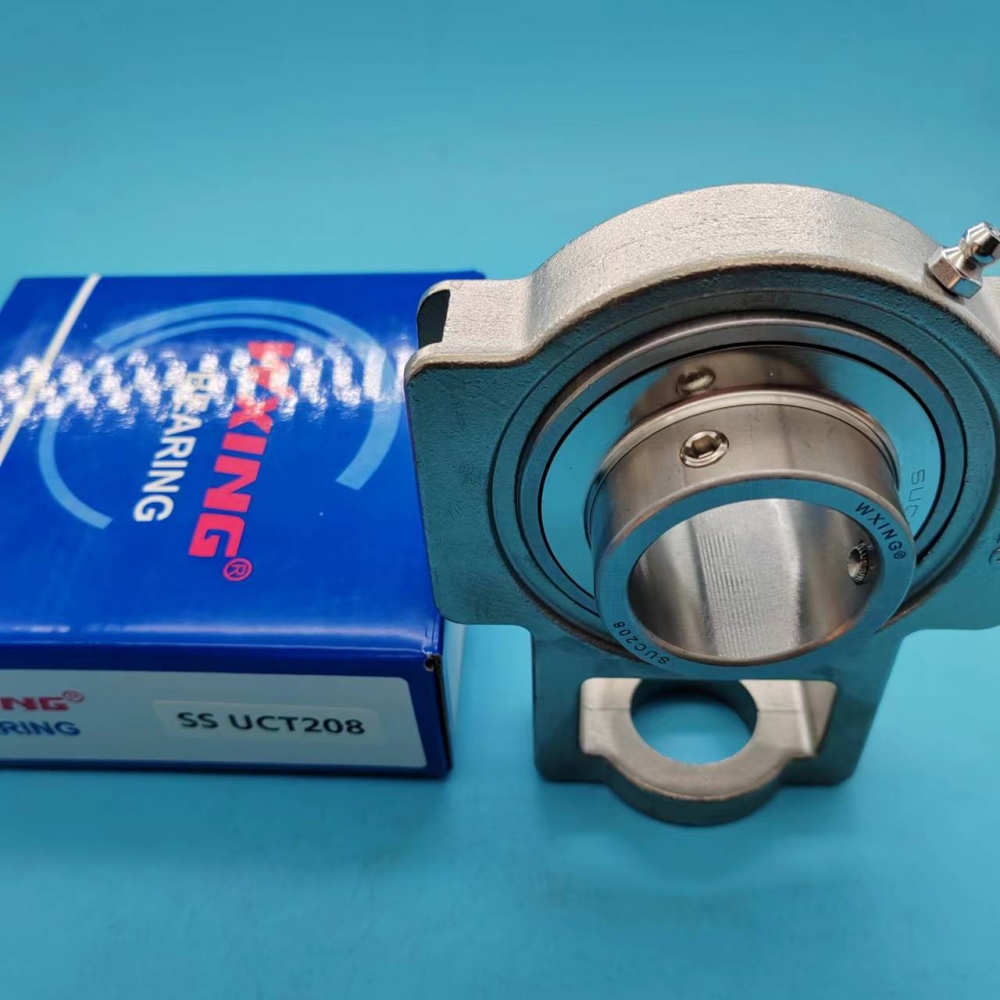 When the rolling bearing is assembled, if the interference with the shaft diameter is large, it is generally assembled by shrink fitting. That is to say, the bearing is put into an oil barrel filled with oil, and the outside of the oil barrel is heated with hot water or flame. The process requires that the temperature of the heated oil be controlled at 80°C to 90°C, generally not exceeding 100°C, and at most not exceeding 120°C. After the bearing is heated, quickly take it out and fit it on the journal. If the heating temperature is too high due to improper temperature control, the bearing will be tempered and the hardness will be reduced, and the bearing will be easily worn, peeled off, and the temperature rises too fast or even cracked during operation.
When the rolling bearing is assembled, if the interference with the shaft diameter is large, it is generally assembled by shrink fitting. That is to say, the bearing is put into an oil barrel filled with oil, and the outside of the oil barrel is heated with hot water or flame. The process requires that the temperature of the heated oil be controlled at 80°C to 90°C, generally not exceeding 100°C, and at most not exceeding 120°C. After the bearing is heated, quickly take it out and fit it on the journal. If the heating temperature is too high due to improper temperature control, the bearing will be tempered and the hardness will be reduced, and the bearing will be easily worn, peeled off, and the temperature rises too fast or even cracked during operation.
It should be noted that when using oil to "boil" the bearing, the bearing should be placed flat in the oil drum, and a wooden block or steel support with a height of about 50mm should be placed between the bearing and the bottom of the drum, and infrared temperature measurement should be used when heating. instrument or thermometer to control the oil temperature. Since the oil bath heating method is inconvenient for the measurement of the bearing expansion, temperature control and installation, it is recommended to use an electromagnetic induction heater.
(4) Improper adjustment of the bearing clearance during assembly
The clearance of rolling bearings is divided into radial clearance and axial clearance. Its function is to ensure the normal operation and lubrication of rolling elements and to compensate for thermal elongation.
For bearings with adjustable clearance, because there is a proportional relationship between the axial clearance and the radial clearance, the required radial clearance can be obtained only by adjusting the axial clearance during installation, and they are generally successful. For use (that is, installed at both ends or one end of the shaft), therefore, only the axial clearance of one bearing needs to be adjusted. But for the reducer, attention should be paid to the meshing of the tooth surface when adjusting the bearing clearance. Generally, gaskets (lead wire method) are used to adjust the axial clearance, and some can also be adjusted with screws or thrust rings. If the gap is adjusted too large or the end cover of the reducer is loose during operation, the bearing gap will be too large, which will not only cause problems such as large vibration of the bearing itself, high noise, and easy damage to the cage, but will also further cause the tooth surface to be improperly meshed and cause the reducer to break. tooth accident. Such as DY company's No. 2 kiln gear reducer, SS company's No. 1 kiln coal mill gear reducer accident is mainly because the bearing axial clearance is too large and the tooth surface meshing is not correct.
For rolling bearings whose clearance cannot be adjusted, because the radial clearance has been determined according to the standard at the time of manufacture, it cannot be adjusted. After such bearings are installed on the shaft diameter or in the housing hole, the actual radial clearance is called assembly. Radial clearance, when assembling, the size of the radial clearance of the assembly should be just enough to form the necessary working radial clearance during operation, so as to ensure the flexible rotation of the bearing. When this type of bearing is working, the relative displacement of the inner race occurs due to the heat elongation of the shaft when the temperature rises, so that the radial clearance of the bearing is reduced, and even the rolling elements are stuck between the inner and outer races. If an axial gap is left between one bearing of the double-support rolling bearing (the other bearing is fixed on the shaft and in the bearing housing) and the side cover, the above phenomenon can be avoided.
A typical example is the No. 2 grate cooler No. 9 fan of PY Company. 8 disc bearings were replaced within one month. Finally, it was suspected that the quality of the bearings was not good, and they were changed to imported bearings, but it still didn't help.
The real reason is that the maintenance personnel lost the spacers added between the upper and lower bearing seats when replacing the bearings. After pressing the upper cover, the outer ring of the bearing will be deformed and flattened, and the radial clearance will become smaller or almost zero. Once the bearing runs If the heat is generated and the expansion is hindered, it will burn out due to the rapid high temperature. In the worst case, the bearing will be burned out after running for almost one or two hours.
After checking the lead wire of the bearing of the fan, it was found that the overwin of each part of the bearing seat mating surface was very different. The most part was added with 0.23mm gasket, and the least part was almost not added. It was only compensated by applying sealant . After the bearing clearance is appropriate, the operating temperature is about 40°C, and everything is normal.
2.4 Poor alignment of the coupling will also cause heating or failure of the bearing
The input shaft of most operating equipment is connected to the power shaft through a coupling, so the coupling must be aligned during assembly so that the driving shaft and the driven shaft are on the same axis. 80% of the heating of the motor tile is caused by poor alignment. Such as PY company raw material mill reducer motor tile. XC company's cement mill reducer coupling itself has too much machining error
Large, resulting in poor alignment, high motor bearing temperature, and large equipment vibration. In addition, during the installation of the coupling, it is necessary to pay attention to the relative position marks of the two halves of the coupling at the driving end and the driven end, so as to avoid excessive deviation of the pin hole and cause the pin to be installed too tightly.
3. The rotor is unbalanced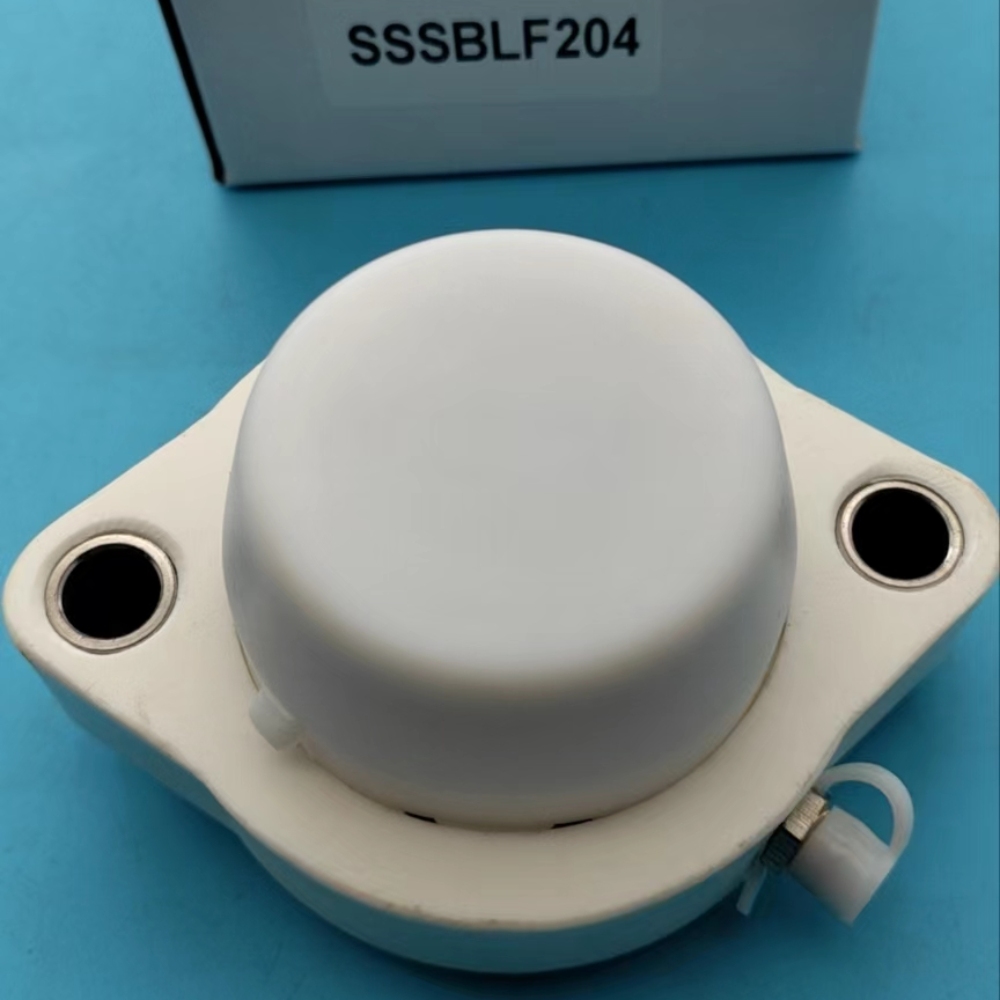
Some rotors are corroded by the medium or worn by solid impurities during operation, or the shaft is bent, which will cause unbalanced centrifugal force, which will cause the bearing to heat up, vibrate, and the raceway will be severely worn until it is destroyed. This is especially important for circulating fans in mill systems. Due to the serious wear of the impeller, the balance of the rotor after wear is poor, and the vibration of the fan is large, which often causes the bearing to fail early.
4. The inspection and replacement is not timely
Bearings should be replaced in time if severe fatigue spalling, oxidative corrosion, worn pits, cracks, hardness reduction to HRC<60, or excessive noise cannot be adjusted. If the inspection and replacement are not timely, it will cause heating, abnormal sound, vibration, etc. of the bearing and even serious damage to the rotor, thus affecting normal production. In addition, the vibration caused by improper disassembly of the bearing and loosening of the anchor bolts of the equipment will also cause indentations on the bearing raceway and rolling elements, and cracks on the inner and outer races of the bearing. During the operation of the bearing, it should be inspected according to the specified cycle.
5. Poor bearing quality
Rolling bearing parts work under high alternating contact stress for a long time in the form of point contact or line contact. The precision, life and reliability of the main engine largely depend on the bearings. Whether it is ordinary bearings or special special bearings, the main engine puts forward high requirements on its life, performance and reliability. Therefore, we must pay attention to the inspection during the purchase and acceptance of bearings. First, we must use products from regular famous brand manufacturers, and even use imported bearings with original packaging for key parts, such as SKF bearings, NSK bearings, TIMKEN bearings and FAG bearings. Special parts should be specially designed, such as the bearings of roller presses and vertical mill rollers.
Although the rolling mill bearings of PY Company and JY Company have been specially ordered, due to the unstable quality of domestic large-scale bearing manufacturing, pitting and peeling of the inner surface of the rolling ring still occurred, causing the bearing to heat up and the rolling machine to stop frequently.
6. Improper bearing selection
When selecting bearings, attention should be paid to the limit speed and load capacity of the bearings, and the speed and load cannot be exceeded.
7. Bearing heating caused by comprehensive factors
AQ company's first-phase rear exhaust fan (model: Y6-2x40-14NO30F) had affected production due to frequent heating of the bearings. The final settlement of this matter took more than two years, and the direct cost was more than 300,000 yuan.
At first, it was because the bearing at the free end of the impeller was overheated and welded together with the shaft due to the overheating of the bearing inner ring. The journal was trimmed with a grinding wheel on site and the production was maintained, because it was worried that the poor fit of this part (the vibration of the fan was too large) would cause long-term hidden dangers to the production. , The rotor main shaft and bearing seat were replaced again during the overhaul. After the replacement, the bearing at the free end was heated first, and then the bearing at the coupling side was heated. The temperature rise sharply reached more than 80 °C in about half an hour after starting up. Repeated many times, causing the kiln system to fail to operate normally. The main reasons for the problems are as follows:
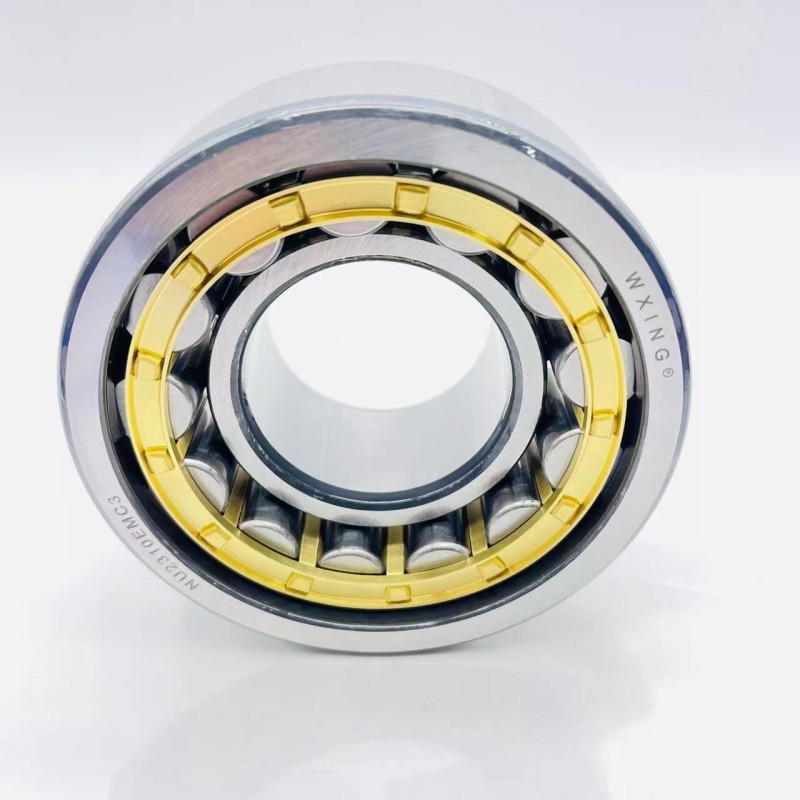 (1) The main reason for the heating and burning of the initial free end bearing is that the outer race is relatively tight, and the bearing cannot produce axial displacement with the expansion of the main shaft. Another reason is that the actual fit between the inner race and the shaft is insufficient (or has become a transition fit). When the temperature rise of the system gas changes in a small range, the bearing is only slightly heated and does not affect the operation. However, if the process system operates abnormally and the gas temperature is too high, the amount of expansion will be insufficient. Slippage occurs between the inner ring and the shaft, and the adhesion is burned out.
(1) The main reason for the heating and burning of the initial free end bearing is that the outer race is relatively tight, and the bearing cannot produce axial displacement with the expansion of the main shaft. Another reason is that the actual fit between the inner race and the shaft is insufficient (or has become a transition fit). When the temperature rise of the system gas changes in a small range, the bearing is only slightly heated and does not affect the operation. However, if the process system operates abnormally and the gas temperature is too high, the amount of expansion will be insufficient. Slippage occurs between the inner ring and the shaft, and the adhesion is burned out.
(2) The heating of the free end bearing after replacing the rotor main shaft and the free end bearing seat is because the sharp angle of the joint surface is not blunt during the processing of the tile seat, which causes the phenomenon of "clamping" after the bearing is installed. For the new bearing seat, attention should be paid to the inspection during assembly, and if necessary, it should be handled according to the requirements of "scratching tiles".
(3) The heating of the bearing on the coupling side is because the verticality of the bearing and the main shaft is not good, the outer race is deflected, and the ball running position is not correct. Because it is an old bearing, once the shaft temperature is abnormal, the position of the bearing changes greatly, and it deviates from the original raceway position, which will cause heat generation. In addition, during the operation of the fan, the base of the motor is tilted, and the motor is displaced, resulting in poor alignment accuracy of the coupling, which is also one of the important reasons.
(4) The oil return pipe of the bearing seat is thinner, the temperature is lower in winter, and the oil return becomes slower. Because of the fear of oil leakage in the axial direction of the bearing seat, the post personnel reduce the amount of oil supplied to the bearing. Objectively reducing the oil supply and circulation of the bearing lubricating oil is also an important reason for the rapid temperature rise of the bearing. In response to this situation, we increased the oil supply pressure on site. (The opening of the oil return pipe valve at the safety valve of the oil station is reduced)
in conclusion:
Central control operators and on-site inspection personnel should be alert enough to the abnormal temperature rise of equipment bearings. It is an early signal of bearing and equipment failure. If the treatment is delayed and the method is improper, the state will further deteriorate and cause major accidents. Therefore, equipment operators and maintenance personnel should pay attention to observe the temperature curve and alarm information of the bearing, and combine vibration monitoring and other means, especially pay attention to find the real cause of the bearing fever, so as to completely eliminate the hidden dangers of the equipment.
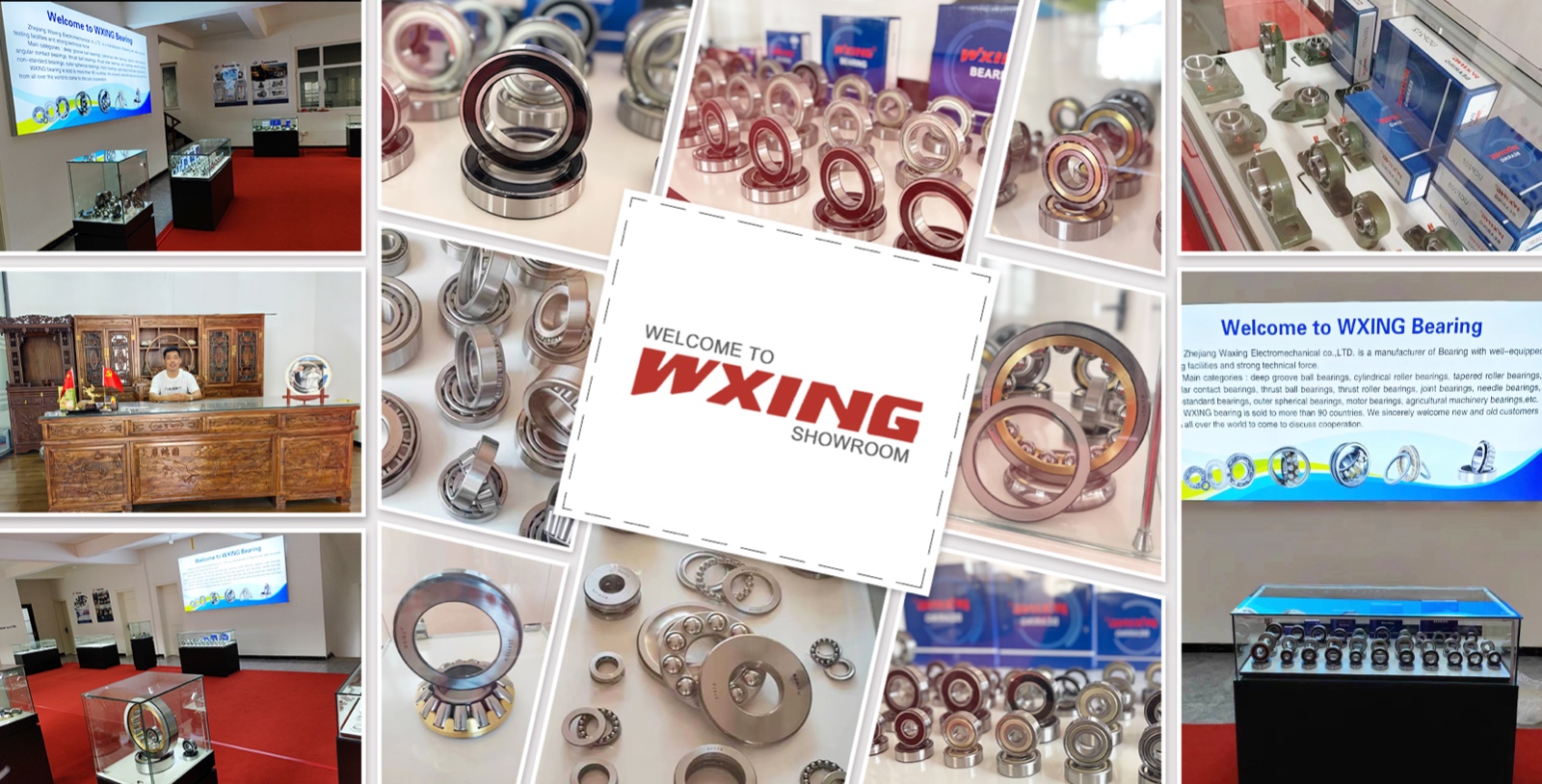
Copyright © 2025 Zhejiang waxing electromechanical co.LTD. | All Rights Reserved Design
Hello, please leave your name email or WhatsApp here before chat online so that we won't miss your message and contact you smoothly.